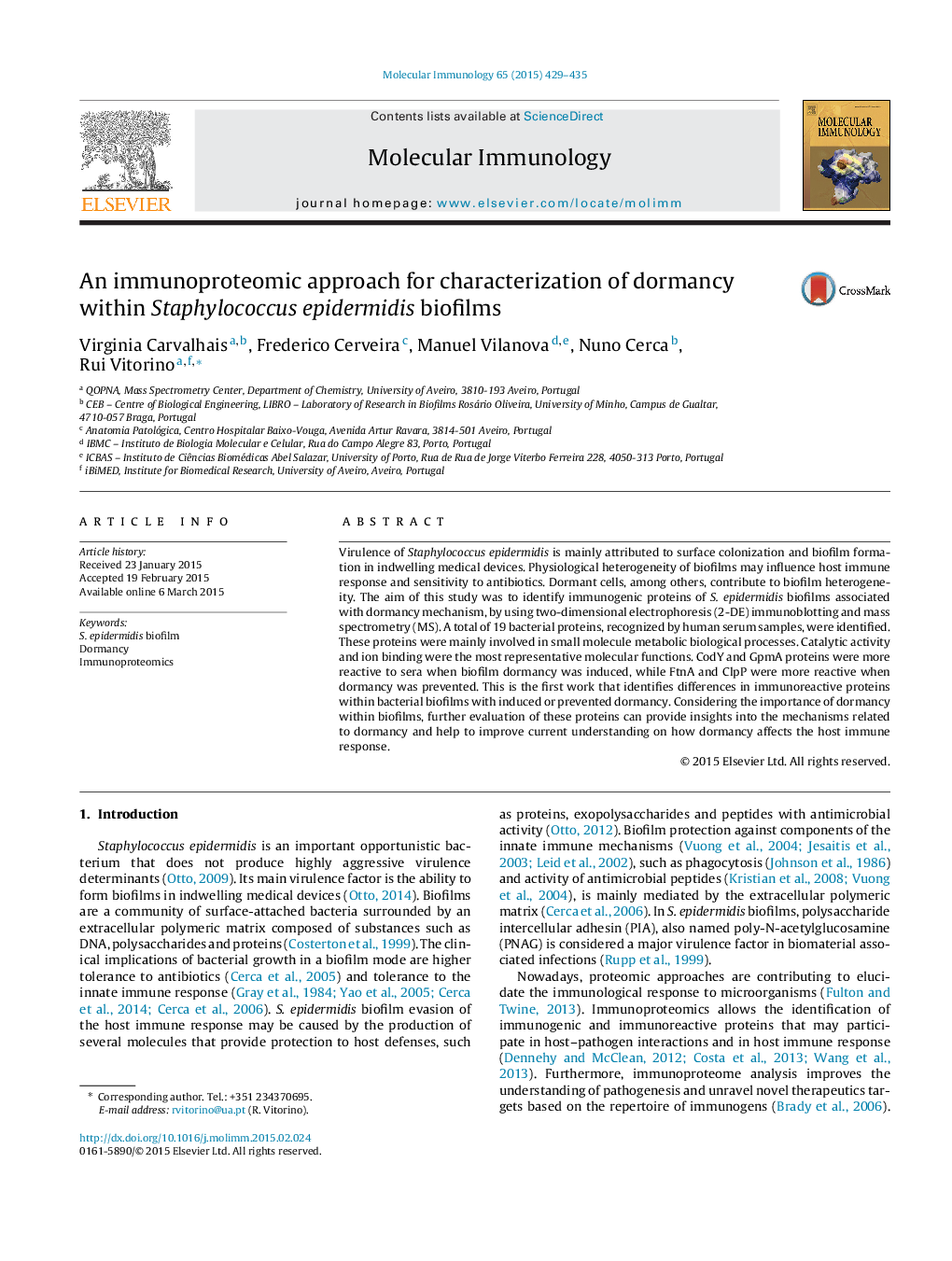| Article ID | Journal | Published Year | Pages | File Type |
|---|---|---|---|---|
| 2830802 | Molecular Immunology | 2015 | 7 Pages |
•Immunoproteomic pattern of S. epidermidis biofilms with induced and prevented dormancy.•Proteins reactive to human sera were first separated by 2-DE.•CodY and GpmA proteins were more reactive to sera when biofilm dormancy was induced.•FtnA and ClpP proteins were more reactive when biofilm dormancy was prevented.
Virulence of Staphylococcus epidermidis is mainly attributed to surface colonization and biofilm formation in indwelling medical devices. Physiological heterogeneity of biofilms may influence host immune response and sensitivity to antibiotics. Dormant cells, among others, contribute to biofilm heterogeneity. The aim of this study was to identify immunogenic proteins of S. epidermidis biofilms associated with dormancy mechanism, by using two-dimensional electrophoresis (2-DE) immunoblotting and mass spectrometry (MS). A total of 19 bacterial proteins, recognized by human serum samples, were identified. These proteins were mainly involved in small molecule metabolic biological processes. Catalytic activity and ion binding were the most representative molecular functions. CodY and GpmA proteins were more reactive to sera when biofilm dormancy was induced, while FtnA and ClpP were more reactive when dormancy was prevented. This is the first work that identifies differences in immunoreactive proteins within bacterial biofilms with induced or prevented dormancy. Considering the importance of dormancy within biofilms, further evaluation of these proteins can provide insights into the mechanisms related to dormancy and help to improve current understanding on how dormancy affects the host immune response.
